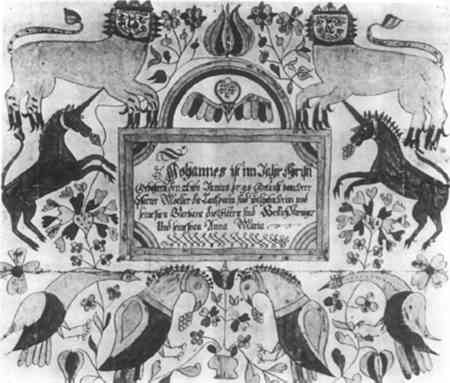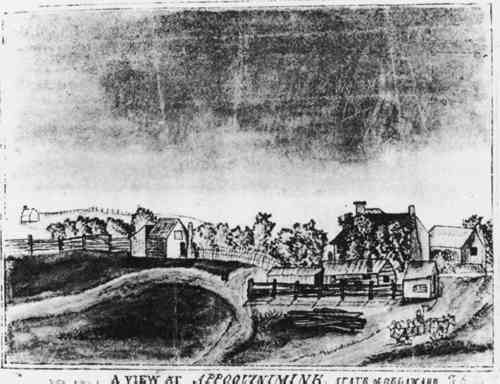PIGMENT ANALYSIS OF EARLY AMERICAN WATERCOLORS AND FRAKTURJanice H. Carlson, & John Krill
1 INTRODUCTIONTHE PAPER CONSERVATION and Analytical Laboratories of the Winterthur Museum have participated in a joint project involving analysis of the pigments used in fraktur and early American watercolors. The term fraktur properly describes a typeface popular in Germany from the sixteenth century and characterized by “fractured” letter forms. It now refers to the illuminated manuscripts of the Pennsylvania Germans, and other German settlers, made during the eighteenth and mid-nineteenth centuries as shown in Figure 1. In contrast is the second group, the watercolors, which are paintings by the rural early American people; see Figure 2.
The objective of this study was to use X-ray fluorescence analysis to identify the chemical elements found in the pigments used by both fraktur artists and early watercolorists. It was hoped that through interpretation of this elemental data, pigments used by both groups could be identified; and that this information would either confirm or lay to rest the idea of the fraktur artist using products of the early American farm environs for his pigments. In addition, the analytical data might help in the authentication of a given painting, since the presence of certain pigments might permit more accurate dating. |

